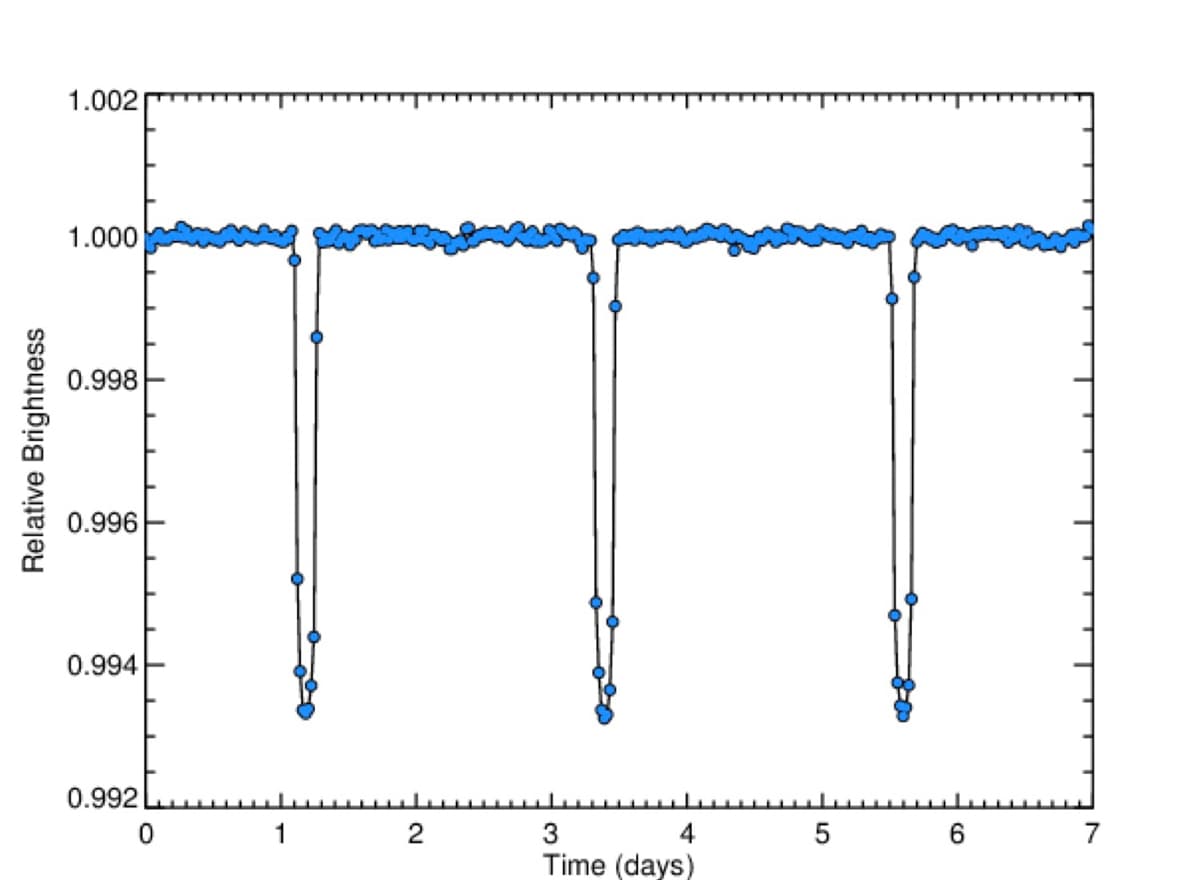The figure above shows the light-curve obtained from continuous monitoring of the flux received from a star. Assuming that the dips arise because a planet orbiting the star passes between it and the observer once per orbit, estimate the orbital period (in days), the orbital semi-major axis (in Astronomical Units), and the physical radius of the planet (in units of the Earth’s radius). The star has a mass of 1.47 M⊙ and a radius of 1.84 R⊙
The figure above shows the light-curve obtained from continuous monitoring of the flux received from a star. Assuming that the dips arise because a planet orbiting the star passes between it and the observer once per orbit, estimate the orbital period (in days), the orbital semi-major axis (in Astronomical Units), and the physical radius of the planet (in units of the Earth’s radius). The star has a mass of 1.47 M⊙ and a radius of 1.84 R⊙
Related questions
Question
The figure above shows the light-curve obtained from continuous monitoring of the flux received from a star. Assuming that the dips arise because a planet orbiting the star passes between it and the observer once per orbit, estimate the orbital period (in days), the orbital semi-major axis (in Astronomical Units), and the physical radius of the planet (in units of the Earth’s radius). The star has a mass of 1.47 M⊙ and a radius of 1.84 R⊙.

Transcribed Image Text:1.002
1.000
0.998
0.996
0.994
0.992
1
3
4
5
7
Time (days)
Relative Brightness
CO
Expert Solution
This question has been solved!
Explore an expertly crafted, step-by-step solution for a thorough understanding of key concepts.
Step by step
Solved in 3 steps with 1 images
